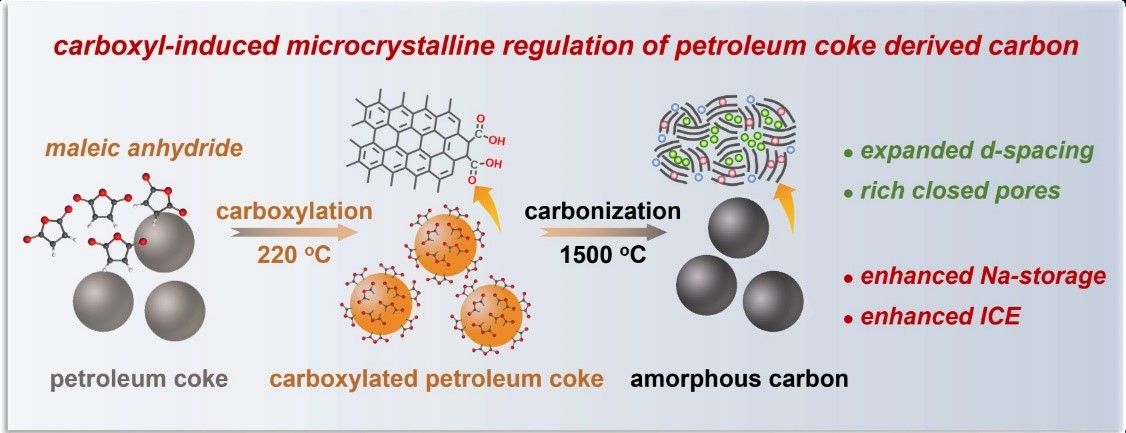Carboxyl-induced microcrystalline regulation of petroleum coke-based carbon anode materials for enhanced sodium storage

Abstract
Developing high-performance and low-cost carbon anode materials is crucial for the industrialization of sodium-ion batteries (SIBs) and remains a serious challenge. Petroleum coke (PC) with electrically conductive genes and cost-effectiveness is a promising precursor for the preparation of electrode materials in energy storage. However, as carbon anode precursor for SIBs, its narrow interlayer spacing and ordered graphitic structure limit sodium storage capacity and initial coulombic efficiency (ICE). Herein, a novel carboxyl-induced crosslinking strategy is developed to regulate microcrystalline structure of PC with the aim of enhancing sodium storage while inheriting PC’s superior electrical conductivity. A modified Diels-Alder reaction triggered by maleic anhydride over the graphitic edges of ball-milled PC grafts abundant carboxyl groups, which further convert into C-O-C groups during subsequent pyrolysis. Such C-O-C groups sterically restrain the rearrangement of adjacent microcrystalline fragments, resulting in a relatively disordered structure with large interlayer spacing and abundant closed pores. Therefore, remarkable increases in reversible capacity from 106.0 to 326.3 mAh g-1 and ICE from 62.3 to 90.0% are observed. The full cell exhibits an energy density of 228.1 Wh kg-1 with excellent cycle stability and rate performance. This carboxyl-induced strategy makes PC possible to be used as anode materials of SIBs.

